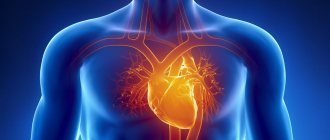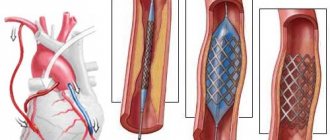How to get disability for hypertension
To obtain a disability, a patient must contact a medical commission for a medical and social examination. The process begins with a visit to the chief physician of the district hospital and obtaining a referral. An alternative way to receive a referral is to contact a pension fund or social security.
List of documents required for application:
- Identity document;
- SNILS;
- Patient Statement;
- Description of the patient’s rehabilitation program;
- Certificate from place of work;
- Outpatient card;
- Doctors' report;
- Certificate of income.
The patient is given a full examination, including:
- Blood tests to determine chemical composition, sugar, hemoglobin and cholesterol;
- Urine tests to determine the condition of the urinary system;
- Echocardiogram;
- Examination of the condition of blood vessels;
- Ultrasound of the main internal organs;
- Examination by a urologist;
- Examination by an ophthalmologist;
- Cardiogram of the heart.
MSE can be carried out at home or in a hospital if the patient cannot come for examination for health reasons.
The examination report, which was carried out on-site, indicates the reason for the patient’s inability to transport. The examination is carried out within 30 days after submitting the application. At this time, the possibility of conducting additional analyzes and studies is also included.
Members of the commission study documents, tests, living and working conditions, and the person’s psychological state. When considering the issue of disability, additional examinations are often prescribed, and third-party specialists (neurologists, psychologists, cardiologists, etc.) are brought in to resolve controversial issues. The decision to assign or deny a certain disability group is made during voting and formalized in an act. It is signed by the chief physician and members of the commission. The act reflects the opinion of the consultants, a list of analyzes and related documents, and other information on the basis of which the decision was made.
If the patient is recognized as partially able to work, then recommendations on working conditions and restrictions are prescribed in the act.
The results of the examinations and the conclusion on them are read to the patient in the presence of all members of the commission. If a person is recognized as disabled, then an extract from the ITU act is sent to the appropriate division of the pension fund. If the patient is not satisfied with the conclusion of the commission that conducted the examination, he has the right to appeal it within three days. The head of the bureau forwards it with all the documentation to a higher authority. A new examination is also carried out within 30 days after the application.
Registration of disability for hypertension
In order for a patient suffering from hypertension to be recognized by the ITU as partially or completely disabled, he must undergo a full medical examination. This, firstly, will confirm the diagnosis and determine the nature of the course of the disease, and secondly, assess the condition of vital organs. In addition to examination by specialized specialists, the patient must undergo a number of studies. The most important of them include:
- A general urine test allows you to assess the degree of kidney damage;
- urine analysis according to Nicheporenko and Zimnitsky determines disturbances in kidney function;
- a general blood test shows the level of hemoglobin and red blood cells;
- a biochemical blood test tells what substances and in what quantities are included in its composition;
- an electrocardiogram allows you to determine cardiac dysfunction;
- Echocardiography indicates pathologies in the anatomy of the heart.
What does obtaining disabled status give?
Depending on what disability group is given to the patient, he is assigned partial or full ability to work. Therefore, people with hypertension should know what gives them a disability of a certain group:
- Group 3: while maintaining the full salary, the patient is transferred to easier working conditions: the number of working hours is reduced, and they are protected from noise, vibration, and high temperatures. Most often they transfer to “paper” work;
- Group 2: depending on the patient’s condition, the question of whether he can continue working is decided - that is, a 2nd working or 2nd non-working group is established. If it is determined that the patient can continue to work, then he needs careful adjustment of working conditions;
- Group 1: assigned in the most difficult situations. Most patients are completely disabled, but if it is determined that the patient can return to work, this is only possible under individually created conditions or at home.
The conclusion of the medical commission must indicate what working conditions and restrictions are shown to everyone who has received the “disabled” status.
In addition, after receiving disability, patients can count on receiving some benefits. They are prescribed in various legal acts, but the system for obtaining benefits is very complicated and can change at the regional level. Therefore, it is necessary to contact the specific Social Security department according to the patient’s registration to find out what benefits and compensation he is entitled to.
Possible employment restrictions
If the patient is considered fully or partially functional, lighter work should be considered to avoid overstraining the blood vessels.
Work activities should be limited and avoided:
- work in hot shops;
- areas with increased vibration and noise;
- intense physical activity;
- stressful situations;
- participation in high-altitude work and activities associated with sudden temperature changes;
- working night shifts;
- contact with certain poisons and harmful substances.
These indications apply to people with any stage of the disease.
Attention! People with hypertension should avoid work that could cause accidents at work.
Benefits and relaxations for a disabled person with hypertension
Not every boss will agree to hire a disabled employee. The latter is entitled to some benefits:
- cancellation of probation;
- impossibility of being involved in work on night shifts and overtime;
- shortened work schedule;
- provision of annual paid leave at a time convenient for the disabled person, the duration for groups I and II is 30 days, and for group III – 28 days.
- Extended vacation at your own expense up to 60 days:
- If a fixed-term contract is concluded, a disabled person has the right to terminate it at any time for health reasons.
At what degree of hypertension is disability given?
The fast pace of life in modern society and stress have a negative impact on health; hypertension is increasingly being diagnosed in patients under 30-35 years of age. If you do not monitor your blood pressure, hypertension can lead to disability.
Obtaining a disability group for hypertension depends primarily on the degree of the disease. With stage I hypertension, when short-term and non-persistent surges in blood pressure up to 159/99 mm Hg occur. Art., and no damage to the heart or blood vessels is diagnosed due to the disease, the patient is considered able to work. In this case, disability cannot be obtained.
Disability is given only to patients with II and III degrees of hypertension. Stage II hypertension is characterized by the following pressure indicators and the degree of organ damage:
- blood pressure from 160/100 to 179/109 mm Hg. Art., which is difficult to reduce to normal levels without taking antihypertensive drugs;
- The medical history includes cardiovascular pathologies and previous diseases - small focal myocardial infarction, stroke, hypertensive cerebral crisis.
Characteristic features of stage III hypertension:
- blood pressure above 180/110, accompanied by pronounced heart failure and does not decrease without drug therapy;
- the patient has severe pathologies of the heart and blood vessels - large-focal myocardial infarction, aortic aneurysm, multiple hypertensive crises, damage to other systems and organs due to hypertension.
In addition to the degree of development of hypertension, the following conditions are taken into account when receiving disability:
- Type of hypertension - primary or secondary. Primary hypertension is an independent disease of the cardiovascular system, while secondary hypertension develops against the background of pathologies of other systems and organs.
- The rate of development of the disease. Slow development - hypertension develops over a long time, mainly under the influence of bad habits (alcohol, smoking) and/or a sedentary lifestyle. Rapidly progressive hypertension - develops over a short period of time, most often under the influence of negative factors or in the absence of treatment. Malignant hypertension is a stage in which organ damage is irreversible.
- The risk of developing complications due to hypertension. The degree of risk is determined depending on the number of factors aggravating the course of the disease. With the first degree of risk, the influence of negative factors is insignificant; with the fourth degree, the internal organs have irreversible pathologies.
What are the stages of hypertension, limitations and contraindications?
The diagnosis of hypertension is made to a person with persistently high blood pressure (at least 140 over 90). This disease is very dangerous, as it causes serious harm to organs and systems in the body. Due to arterial hypertension (AH), the patient loses his ability to work, must undergo periodic outpatient treatment, etc. Often, a hypertensive patient becomes disabled. There are primary and secondary hypertension. In the first case, jumps in systolic and diastolic pressure occur, which do not affect the functioning of other organs and systems. Secondary hypertension is characterized by damage to the kidneys, liver, lungs, heart and other organs. The symptoms are pronounced. It is this type of hypertension that poses a particular danger to human life. Doctors distinguish 3 main stages of hypertension. Each of them has its own characteristics and contraindications. Let's look at them in more detail.
Stages of hypertension
First stage
At the first stage of the disease, irreversible disorders in the body do not yet occur:
- Normal working capacity is maintained;
- Increases in both systolic and diastolic pressure levels occur from time to time;
- The risk of complications is minimal;
- Heart rate is within normal limits.
Hypertensive patients are recommended to switch to work that takes into account the disease: without stressful situations, work at night and in a noisy room. If there are no favorable working conditions, then the load on the blood vessels and hearts increases, and the disease begins to progress.
Symptoms of stage 1 hypertension:
- Dizziness;
- Frequent and severe headaches;
- Poor concentration;
- Insomnia;
- Photopsia;
- Dyspnea.
Second stage
The second stage of the disease is characterized by constantly elevated blood pressure and disturbances in the functioning of the heart. For hypertensive patients with the second stage of hypertension, there are contraindications in work: they are prohibited from holding positions associated with emotional and physical stress, requiring prolonged and increased concentration. They are also prohibited from working in hot workshops, as well as any activity associated with increased noise. It is not recommended for them to work at high altitudes or in difficult conditions. Shortened working hours are established for patients.
Third stage
The third stage of hypertension is accompanied by brain pathology and a high risk of complications: ischemic and hemorrhagic strokes. Vascular pathology also progresses, and the condition of the kidneys and central nervous system worsens.
Heart disease can lead to heart attack, hemodynamic instability, and visual impairment. Further development of arterial hypertension provokes the destruction of nerve cells in the brain.
In the third stage of hypertension, disability is inevitable.
Treatment
To cure the disease you need to adhere to proper nutrition and give up cigarettes and alcohol. If hypertension still makes itself felt, then you should resume taking medications.
To treat hypertension it is necessary:
- Follow nutritional rules. Reduce your intake of fatty, sweet and starchy foods, as the disease affects people who are overweight. Try to gradually eliminate salt from your diet; instead, it is recommended to season your dishes with various spices to enhance the flavor of the food.
- Quit smoking. Healthy vessels are wide, since blood must move freely through them. Smoking causes the veins to narrow and the red blood cells to stick together. Thus, lumps are formed that settle on the walls of the vessel, disrupting the normal rhythm of blood circulation. After some time, blockage of the blood vessels occurs, which leads to the death of the patient. If you give up cigarettes and at the same time start taking medications, it is possible to cure hypertension.
- Try to avoid stressful situations, as the release of adrenaline affects vascular spasm. There is no need to take everything to heart; be more calm about negative influences from the outside.
- Regular exercise or exercise for 15 minutes. Sedentary, sedentary work leads to shortness of breath and increased blood pressure, so daily physical exercise is needed.
- Monitor the normal level of potassium in the body. A lack of a microelement disrupts the heartbeat rhythm and leads to arrhythmia. Therefore, it is recommended to consume raisins, prunes, dried apricots, dried cherries and apricots.
In addition to all the above tips that you need to introduce into your daily life, you also need to consume vitamins E and C. Vitamin C works to strengthen the walls of blood vessels and arteries, and vitamin E improves their elasticity. When treating, it is best to consume vegetables raw. Heat treatment of vegetables helps preserve the antioxidants necessary for the body.
Procedure for processing documents
To obtain an expert opinion, you need to complete several steps:
- Draw up and submit an application to the head of the organization.
- Referral from the patient’s place of observation or from social protection authorities (only if there is no place of registration). The referral contains comprehensive health data, information about the degree of pathology, involvement of target organs and life support systems, and the results of treatment and rehabilitation in a hospital.
To perform the procedure, the clinic to which the application was submitted is used. For bedridden patients, the study is performed at home or in the hospital. There is a correspondence form of examinations, but you will have to obtain a lot of documents.
To award disability, even with stage 3 hypertension, risk 4, a commission must be convened. In this case, annual confirmation is not required, but in others it is carried out regularly once every 1-2 years. Confirmation is not carried out for women over 55 years of age and men over 60 years of age, as well as for patients with serious irreversible disorders of the anatomical structure of the body.
Necessary tests for disability
Group registration
The procedure requires collecting a package of documents from the attending physician, which describes in detail the course of hypertension, the effectiveness of treatment, comprehensive measures applied during therapy, and rehabilitation. To receive them, you need a written application to the head of the medical organization, obtaining a referral, and undergoing an examination with assignment of a group.
Group confirmation
It is held annually for disabled people of groups 2-3, and once every two years for the first group. Sometimes the group is assigned for life: upon reaching retirement age or in case of irreversible anatomical defects. There are exceptions that, by law, are not subject to re-examination, and what group the patient has does not matter. The examination can be carried out in absentia.
If you are refused
It involves appealing the ITU's conclusion within a month. To do this, you need to submit a written statement of disagreement with the verdict to the bureau where the examination was carried out or the parent organization.
Symptoms of hypertension
The most common target organs for hypertension are the heart and blood vessels. The symptoms of this disease develop gradually, and health deteriorates slowly. People who experience blood pressure surges should be under the supervision of a doctor and take medications to lower blood pressure as prescribed. Hypertensive patients are placed on a special register and undergo medical examination from time to time.
Hypertension and its types
High blood pressure is one of the most common ailments of modern humanity. Mortality after complications of this disease occupies one of the leading places. Doctors are sounding the alarm, as many patients do not pay due attention to this problem and seek professional help too late. So, what is hypertension? Let’s consider further.
The disease is divided into several stages, each of which is accompanied by certain symptoms. By type, the disease is divided into primary and secondary hypertension.
Primary
Characteristic of this type is that the increase in pressure occurs without affecting the work and normal functioning of other internal organs. With this type of pathology, there is an increase in both systolic and diastolic pressure. During pressure surges, patients may experience mild or intense headaches. It can be of a different nature, for example, compressive or bursting, long-term or short-term. Most often, a feeling of discomfort is noted in the morning after waking up, but often a headache appears during the day. Dizziness is also a common symptom of primary hypertension. In most cases, this symptom is not independent, but appears along with headaches. May appear and disappear suddenly several times a day. Another sign may be a feeling of discomfort in the heart area and rapid heartbeat. Even at the first stage of the disease, the patient begins to experience a constant feeling of weakness, moral and physical fatigue.
Secondary
This degree is accompanied by damage to internal organs such as the heart, kidneys, lungs, brain and some others. Here, the manifestations of the disease depend on which of the systems is affected. For example, with a disease of the thyroid gland, a person may experience symptoms such as increased sweating and a feeling of heat. If the heart and blood vessels are damaged, cardiac dysfunction, headache, and nausea may occur. Affecting the brain, the disease can provoke partial loss of vision and hearing. You may also experience nosebleeds, shortness of breath, chronic fatigue, and many other symptoms.
Important! If one or more symptoms develop, seek professional advice and medical examination. This will help save life and eliminate serious complications.
How to register a group
First of all, to register a disability, you should obtain a medical and social examination report. To do this, you need to write an appeal addressed to the head of your medical institution. Who will schedule an examination at the clinic at the patient’s place of residence. To recognize the patient’s disability, the commission is provided with data on the patient’s condition, the frequency and severity of hypertensive crises, examination results and a conclusion on the effectiveness (or ineffectiveness) of the treatment.
What examination is necessary for referral to ITU?
The group is not assigned to everyone; to obtain it, a number of documents are required, the list of which is determined by the attending physician. He also establishes an algorithm for the patient’s actions.
The examination algorithm is prescribed by law:
- regardless of the nature of hypertension: OAM, UAC, test according to Nechiporenko, Zimnitsky, urine culture, bacteriuria titer, ECG, fundus examination, cardio-ultrasound, detection of somatic pathology. According to indications: daily monitoring of blood pressure, blood cholesterol, triglycerides.
- To exclude symptomatic hypertension, urine creatinine, total protein, sugar, electrolytes, ultrasound and radioisotope examination of the kidneys, a hypothiazide test, excretory urography, testing for catecholamines, aldosterone, cortisol, and blood ACTH are examined. Urine analysis: 17-OX. In addition, aortography, CT of the sella turcica.
As prescribed by the doctor, any other additional examination methods can be carried out to clarify the diagnosis and the rationality of the therapy.
Medical and social examination is a special independent commission of doctors of various specialties, empowered to determine the disability group for patients with various diseases, based on the conclusion of the attending physician and analysis of clinical and laboratory examination data. ITU is considering whether to assign a group or re-examine. Hypertension of a certain severity is a reason for referral to ITU.
Disability groups by severity of pathology
Is there a disability group for hypertension?
? Hypertension is one of the pathological conditions that are a limitation for a huge number of different types of professional activities. That is why hypertensive patients often need to establish disability as an option for social protection of the sick person.
In the process of confirming a patient’s disability, specialists take into account several factors:
- the type of hypertension, the nature of its course and the rate of progression of the pathological process;
- age of the sick person;
- stage and extent of the disease;
- the presence and severity of changes in visceral organ structures;
- frequency of hypertensive crisis conditions and their complications;
- associated ailments;
- the nature of the work activity of a hypertensive person, as well as working conditions.
The indication for establishing disability is not grade 1 hypertension with periodic surges in blood pressure and the absence of complaints from the patient.
With hypertension of 2 and 3 degrees, patients’ ability to work is significantly reduced, so they begin to need medical and social protection, which implies disability.
The third group is established for patients with stage 2 hypertension with a slowly developing variant of the disease with minimal complications and without serious damage to organ elements. Disability due to grade 2 hypertension can be removed as a result of an improvement in the person’s general condition and a reduction in the manifestations of the underlying disease. As a rule, transformation into the second group is predisposed to risks 3 and 4, which are accompanied by frequent hypertensive crises. Patients in this group are not removed from work, but are simply transferred to work with easier conditions while maintaining wages.
Hypertensive patients suffering from stages 2 and 3 hypertension with a malignant course and moderate damage to internal organs can count on receiving the second disability group. People with disability group 2 can do simple work at home and also receive regular social benefits.
Patients with severe forms of hypertension that have a malignant course can receive the first disability group. In such patients, internal organs are damaged, symptoms of cardiac and renal failure are present, and the ability to move and self-care is limited.
Disability in hypertension of the 3rd degree, risk 4, does not require annual recommission due to irreversible functional changes in the cardiac sphere and other visceral systems.
Risks of hypertension
The degree of risk of hypertension is an important indicator that doctors display in the diagnosis of patients suffering from high blood pressure. When determining it, a number of factors are taken into account, including gender, a person’s age, blood cholesterol levels, heredity, bad habits, obesity and limitation of physical activity, as well as target organ damage.
There are four levels of risk factors:
- I st
. – absence of aggravating factors (the risk of complications is 10-15%); - II Art
. – the presence of one to three risk factors for the development of pathology (complications are possible in 20% of cases) - III Art
. – three aggravating factors (the probability of developing target organ damage is 30%); - IV Art
. – more than three factors (the risk exceeds 30% or the target organs are already affected).
How often do I need to confirm my group?
Disability is established:
- indefinitely;
- for one year;
- for two years.
Permanent disability is established in the following cases:
- When passing the ITU, a disability group of 1 or 2 is assigned to a man who has reached the age of 60, a woman who has reached the age of 55.
- Re-examination is scheduled after 60 years for men and after 55 years for women.
- If a disabled person has 1 or 2 disability groups for 15 years without positive dynamics during his illness.
- If the disability was assigned more than 5 years ago and at the time of the next re-examination the man turned 60 years old, and the woman turned 55 years old.
- Veterans of the Great Patriotic War, if group 1 or 2 is established, or if disability was assigned before the war.
- In the event that a WWII veteran has disability group 3 and it has been extended for the last 5 years.
- If a citizen is a participant in hostilities, as a result of which he received a combat wound, which was the cause of disability.
In other cases, during the initial examination, disability group 1 is assigned for 2 years, and groups 2 and 3 require annual confirmation.
Disability groups for hypertension
The fact of disability is determined and the group is assigned by the ITU commission after studying the medical history, familiarizing itself with the results of additional diagnostic methods and the opinions of doctors of related specialties.
A patient with hypertension may be assigned one of three disability groups or denied the status of a disabled person. Patients with the first stage of hypertension do not have the right to receive a disability group.
Third group
Disability of the third group is given to patients with relatively stable second stage hypertension and minimal target damage. Along with assigning a group, the expert commission can make recommendations on transferring the patient from a job that is contraindicated for him to a more gentle one. the second stage of work is contraindicated:
- with heavy physical labor or nervous and emotional stress;
- in conditions of unstable temperature;
- at night time;
- on high;
- in conditions of vibration and noise;
- with industrial poisons and toxins;
- at a given rhythm (on conveyors);
- with increased responsibility (air traffic controller, pilot, driver).
Patients of this disability group can work, but their working conditions must be gentle. The wages of disabled people of the third group are retained in full.
Second group
Patients suffering from stage 2 or 3 hypertension are assigned a second disability group if they have:
- moderate target damage;
- medium or high risks of complications;
- subcompensated heart failure;
- unstable effect of prescribed therapy.
In most professions, this group of disabilities is non-work-related. In some cases, work is allowed taking into account the professional skills of patients, but under special working conditions.
Types of work restrictions due to disability due to hypertension
Every person diagnosed with arterial hypertension, even regardless of whether he is assigned a disability group or not, needs special working conditions. It is important to always remember that even primary hypertension is a serious disease, which is characterized by symptoms such as headache, blurred vision, poor coordination, constant fatigue, general weakness, tinnitus and dizziness. Therefore, absolutely all hypertensive patients are contraindicated in the following work:
- requiring constant psycho-emotional stress;
- associated with strong noise, vibration, cold, heat and high dust levels;
- performed during sudden changes in temperature conditions;
- requiring contact with vascular poisons;
- associated with altitude and night shifts.
The higher the severity of the disease, the wider the list of restrictions on certain professions becomes. Thus, patients with stage 2 hypertension who have damage to the heart vessels are strictly prohibited from engaging in physical labor even with moderate intensity. In case of cerebral vascular pathology, work involving fast-moving mechanisms is contraindicated, the sudden stop of which can lead to tragedy. Hypertensive patients with such severity of the disease have the right to work reduced hours and perform a small amount of work, especially if they require mental stress and close attention. But with grade 3 hypertension and disability group 1, you cannot work at all, since many of these patients are not able to independently resolve even everyday issues.










